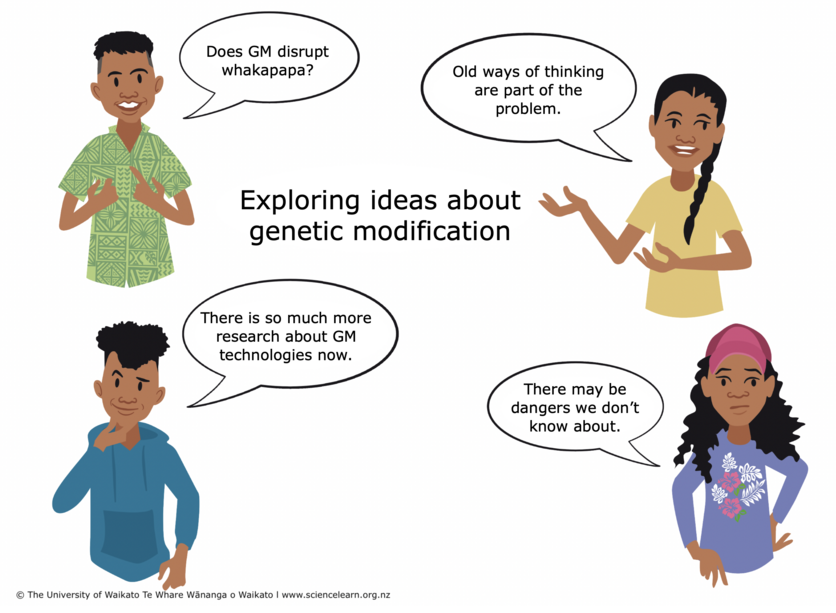Socio-scientific issues bring science learning to life. Our new content combines two vexing societal issues – new gene technologies and their potential uses for pest management.
RNA interference
RNA interference (RNAi) is a natural process where small RNA molecules ‘silence’ or decrease the activity of specific genes by preventing them from making proteins. Scientists have been able to modify the process that temporarily silences genes. The New Zealand BioHeritage Challenge has proposed the use of RNAi to manage pest populations like the varroa mite and to address the threat of myrtle rust to our native trees. Alongside the science, the team researched te ao Māori considerations for novel biotechnologies like RNAi.
RNA interference – a context for learning provides pedagogical support and curriculum information for educators interested in exploring the social, ethical and biological implications of RNAi. The activity RNAi – making science-informed responses uses concept cartoons and provocative statements to help students consider a range of viewpoints about RNAi and genetic technologies. The activity is useful across curriculum levels and supports NCEA level 1.1 Demonstrate understanding of a science-informed response to a local issue.
Primary teachers – planning for term 4
We hope that you are able to take time off during the term break. When the urge to plan hits, here are some options to consider. These resource curations have been designed specifically for primary classrooms:
- Seeds, stems and spores – plant life cycles and reproduction
- Observing water – solids, liquids, gases and bubbles
- Soil – dig a hole for discovery and observation
- Thinking about plastics – the good, the not so good and taking action.
Alternatively, check out some of our collections – they are full of great ideas and hands-on activities – all in one place!
Events
While you are perusing the site for planning, check out our events section. It’s full of education and science events across the motu. We have a listing for the Spring school holidays 2023 – it has lots of ideas to keep the young ones engaged and learning.
If you have an event you'd like us to feature, please email us.
Save the date – 26 October we will be running a webinar focussing on antimicrobial awareness. More information will be coming out soon.
Update to a Hub favourite
Yes, the Hub team has favourite content! We’ve always had a soft spot for the vegetable caterpillar and the animation that shows how it becomes mummified. We are so excited to now have a te reo Māori version – Te anuhe whakapokongia. Enjoy!
Follow us
We offer added value through our social media. Contact us about creating collections or boards tailored to your needs. We can help foster connections between the education and science communities.
- Facebook: www.facebook.com/nzsciencelearn
- Twitter: www.twitter.com/NZScienceLearn
- Pinterest: nz.pinterest.com/nzsciencelearn
- Instagram: www.instagram.com/sciencelearninghubnz
Your feedback
We hope you enjoy using the Science Learning Hub – Pokapū Akoranga Pūtaiao in your teaching and would love to hear from you. Your comments, ideas and feedback can be emailed to enquiries@sciencelearn.org.nz.
Noho ora mai
Science Learning Hub – Pokapū Akoranga Pūtaiao
See all news


